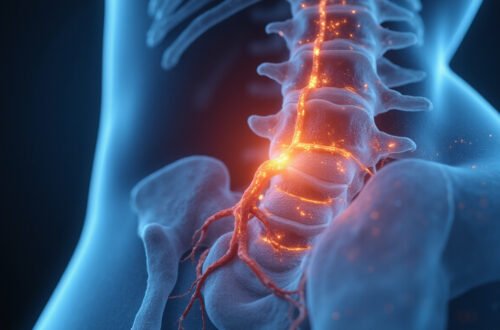Sciatica diagnosis is essential for anyone experiencing persistent lower back pain radiating down the leg. Understanding the symptoms, undergoing appropriate diagnostic tests, and exploring effective treatment options can significantly improve quality of life. This comprehensive guide will walk you through the key signs of sciatica, how healthcare professionals diagnose it, and the best ways to manage and treat this common nerve-related condition.
What Is Sciatica?
Sciatica refers to pain that follows the path of the sciatic nerve — the longest nerve in the human body running from the lower back down to each leg. This pain is usually caused by compression, irritation, or inflammation of the sciatic nerve roots, often due to herniated discs, spinal stenosis, or degenerative changes in the spine.
Because sciatica is a symptom rather than a disease itself, accurate sciatica diagnosis is critical to identify the underlying cause and guide effective treatment strategies.
Key Signs and Symptoms of Sciatica
Recognizing the key signs is the first step toward obtaining an accurate sciatica diagnosis. Common symptoms include:
- Radiating pain: Sharp, burning, or shooting pain starting in the lower back or buttocks, traveling down the back of the thigh and calf, sometimes reaching the foot or toes.
- Numbness and tingling: A sensation of "pins and needles" or loss of feeling along the nerve pathway.
- Muscle weakness: Difficulty moving the leg, controlling foot movement, or experiencing a "foot drop."
- Worsening symptoms with certain activities: Pain that increases with sitting, coughing, sneezing, or sudden movements.
- One-sided pain: Usually, sciatica affects only one leg unless both sciatic nerves are compressed.
If these symptoms persist beyond a few days or worsen, it’s crucial to seek professional evaluation for sciatica diagnosis and treatment.
How Is Sciatica Diagnosed?
Sciatica diagnosis involves a combination of patient history, physical examination, and diagnostic tests. Here’s what typically happens during a medical assessment:
1. Medical History Review
Your healthcare provider will start by asking about your symptoms — when they began, their severity, and any aggravating or relieving factors. They will also inquire about prior medical problems, injuries, or activities that could have contributed to nerve irritation.
2. Physical Examination
During the exam, the doctor might perform the following tests to assess nerve function and pinpoint sciatica:
- Straight leg raise test: Lifting the affected leg while lying down to see if it causes or intensifies leg pain, indicating nerve root irritation.
- Reflexes and muscle strength: Checking reflex responses and muscle strength to identify any nerve impairment.
- Sensory testing: Evaluating sensations such as light touch or pinprick along the leg.
3. Imaging Tests
If the symptoms are severe, persistent, or accompanied by neurological deficits, imaging studies help confirm the sciatica diagnosis and identify the underlying cause:
- Magnetic Resonance Imaging (MRI): Provides detailed images of spinal discs, nerves, and soft tissues, helping detect herniated discs or spinal stenosis.
- Computed Tomography (CT) Scan: Useful when MRI is contraindicated or to provide detailed bone imaging.
- X-rays: May rule out fractures, bone spurs, or tumors but usually don’t show nerve problems directly.
- Electromyography (EMG) and Nerve Conduction Studies: Assess electrical activity in muscles and nerves to evaluate nerve damage.
According to the American Academy of Orthopaedic Surgeons, early diagnosis and treatment of sciatica often prevent long-term complications and reduce pain duration (source).

Effective Treatment Options for Sciatica
Treatment for sciatica focuses on relieving pain, addressing the underlying issue, improving mobility, and preventing future episodes. Here are common approaches:
1. Conservative Treatments
Most cases of sciatica improve with non-surgical measures:
- Physical Therapy: Tailored exercises to strengthen back and leg muscles, improve flexibility, and reduce nerve pressure.
- Medications: Over-the-counter pain relievers (ibuprofen, acetaminophen), muscle relaxants, or prescription medications such as nerve pain agents.
- Hot and cold therapy: Ice packs can reduce inflammation, while heat therapy relaxes tight muscles.
- Lifestyle Modifications: Avoiding prolonged sitting, practicing good posture, and ergonomic adjustments at work.
2. Alternative Therapies
Some patients find relief through complementary therapies such as:
- Chiropractic adjustments to improve spinal alignment.
- Acupuncture to stimulate nerve pathways and reduce pain.
- Massage therapy to relieve muscle tension.
3. Interventional Treatments
For persistent or severe sciatica, more invasive options might be recommended:
- Epidural steroid injections: Corticosteroids injected near the irritated nerve root can reduce inflammation and relieve pain.
- Nerve blocks: Temporary anesthesia to numb the affected nerve.
4. Surgical Options
Surgery is usually considered if conservative treatments fail after 6-12 weeks or if neurological deficits worsen. Procedures include:
- Microdiscectomy: Removal of herniated disc material pressing on the nerve.
- Laminectomy: Removing part of the vertebra to relieve nerve pressure.
When to See a Doctor Immediately
Seek urgent medical attention if sciatica symptoms include:
- Severe weakness in the leg.
- Loss of bladder or bowel control.
- Sudden, severe leg pain following trauma.
- Progressive numbness or difficulty walking.
These could indicate serious nerve damage or conditions requiring emergency care.
Summary: Diagnosing and Managing Sciatica
| Step | Details |
|---|---|
| Symptoms | Radiating leg pain, numbness, tingling, muscle weakness |
| Initial Examination | Medical history, physical examination (straight leg raise) |
| Imaging | MRI, CT scan, X-rays to confirm cause |
| Conservative Care | Physical therapy, medications, heat/ice therapy |
| Advanced Treatments | Injections, alternative therapies |
| Surgical Treatment | Microdiscectomy or laminectomy if necessary |
Frequently Asked Questions (FAQ) About Sciatica Diagnosis
Q1: How soon can I expect a diagnosis after visiting a doctor for sciatica symptoms?
A1: Most doctors can begin sciatica diagnosis based on your history and physical exam right away. Imaging tests, if needed, might take a few days to schedule, but initial assessment is typically prompt.
Q2: Can sciatica diagnosis be done at home using symptom checkers?
A2: While online tools can offer preliminary guidance, sciatica diagnosis requires professional evaluation including physical testing and imaging to accurately identify the cause.
Q3: Are there blood tests involved in sciatica diagnosis?
A3: Blood tests are not typically used to diagnose sciatica but may be ordered if infection or inflammation from other conditions is suspected.
Take Charge of Your Sciatica Today
If you are experiencing symptoms suggestive of sciatica, prompt sciatica diagnosis by a qualified healthcare provider is vital to avoid prolonged pain and disability. Don’t let sciatica limit your daily activities — schedule an evaluation, follow recommended treatments, and incorporate preventive strategies such as exercise and ergonomic awareness. Early diagnosis combined with appropriate care can get you back on the path to pain-free living quickly and safely. Your journey toward relief starts with recognizing the signs and taking action now.





